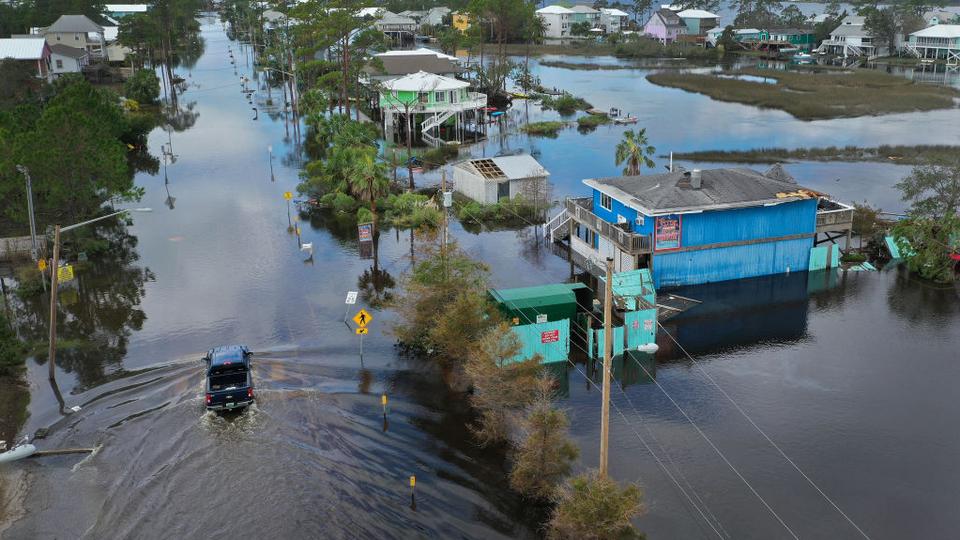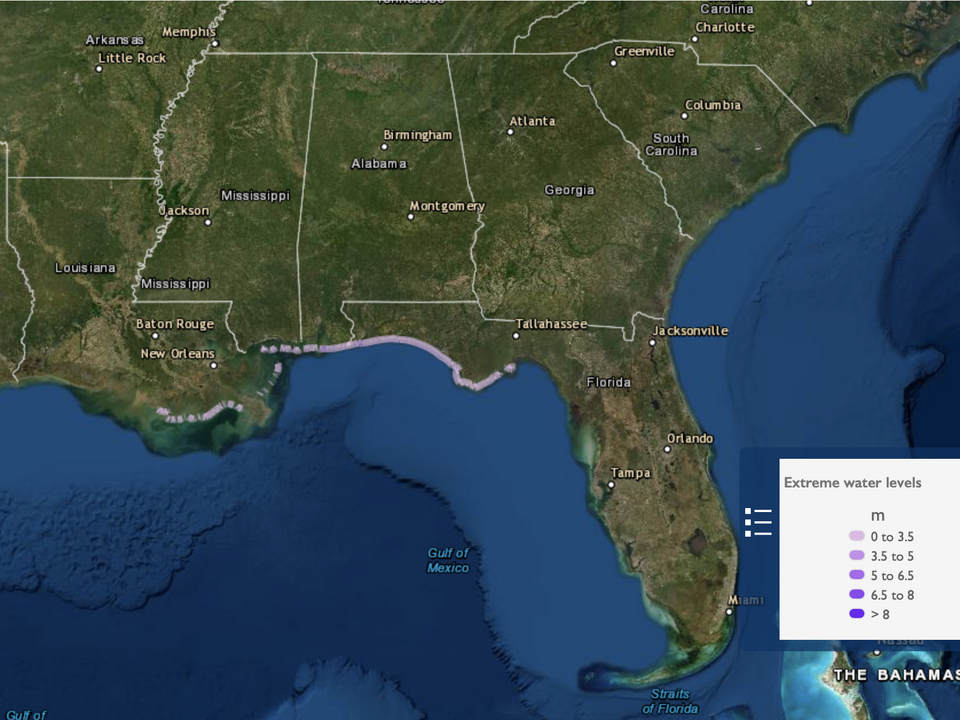
Hurricane Sally
An aerial view from a drone shows people walking through a flooded street after Hurricane Sally passed through the area on September 17, 2020, in Gulf Shores, Alabama. The storm came ashore with heavy rain and high winds. Photo by Joe Raedle/Getty Images.All rights reserved.This story appears here courtesy of TheChurchNews.com. It is not for use by other media.
By Jason Swensen, Church News
It was an anniversary no one on the east end of the U.S. Gulf Coast wanted to celebrate or relive.
But 16 years to the day that Hurricane Ivan began battering that region in 2004, Hurricane Sally made landfall at roughly the same spot on Wednesday, September 16.
The latest, ongoing iteration of severe weather across the U.S. Southeast prompted plenty of Ivan memories that local Latter-day Saints and their neighbors were likely hoping to forget.
Still, they seemed to be responding resiliently.
“We have trees that have fallen, some flooding and power outages … but overall, we’re doing pretty good,” Pensacola Florida Stake President Kevin Curtis told the Church News on Thursday.
All missionaries serving in threatened areas are safe and accounted for, reported Elder Douglas Carter, an Area Seventy.
Local priesthood and Relief Society leaders were continuing Thursday to contact members and assess needs. There were no initial reports of significant damage to Church-owned properties.
“There’s no structural damage to buildings in our stake, but the power is out,” said President Curtis, adding that Pensacola-area members are working with the Red Cross to assist in their community.
At least one person from the region is dead and another is missing after Sally blew ashore as a Category 2 hurricane early Wednesday. Sally was the fourth hurricane to make landfall in the United States this year after Hanna, Isaias and Laura, the most to hit by the same date in 16 years, CNN reported.
Sally was downgraded into a tropical storm after landfall, then further weakened into a tropical depression by Wednesday night. Still, the slow-moving storm will be long remembered as a destructive rain-producer.
“We had 30 inches of rain in Pensacola — 30-plus inches of rain — which is four months of rain in four hours,” Ginny Cranor, chief of the Pensacola Fire Department, told CNN.
Rainfall totals of 10 to 35 inches are possible from Mobile Bay, Alabama, to Tallahassee, Florida, forecasters said. Meanwhile, hundreds of thousands of residents in Florida and Alabama were without power Thursday.

Hurricane Sally
USGC map showing extreme water levels across Louisiana, Mississippi, Alabama, and Florida after Hurricane Sally made landfall on Wednesday, September 16, 2020. Map courtesy of www.USGC.gov. All rights reserved.Sixteen years ago, Hurricane Ivan destroyed or severely damaged scores of Latter-day Saint homes in Jamaica, Grenada and other neighboring islands before continuing north to the U.S. Gulf Coast.
There is one key difference between the two hurricanes. Ivan was fast-moving, with a landfall speed of about 120 mph. But Sally seemed in no hurry Wednesday, moving at about 2 mph — a pace easily matched by most walking humans.
Copyright 2020 Deseret News Publishing Company